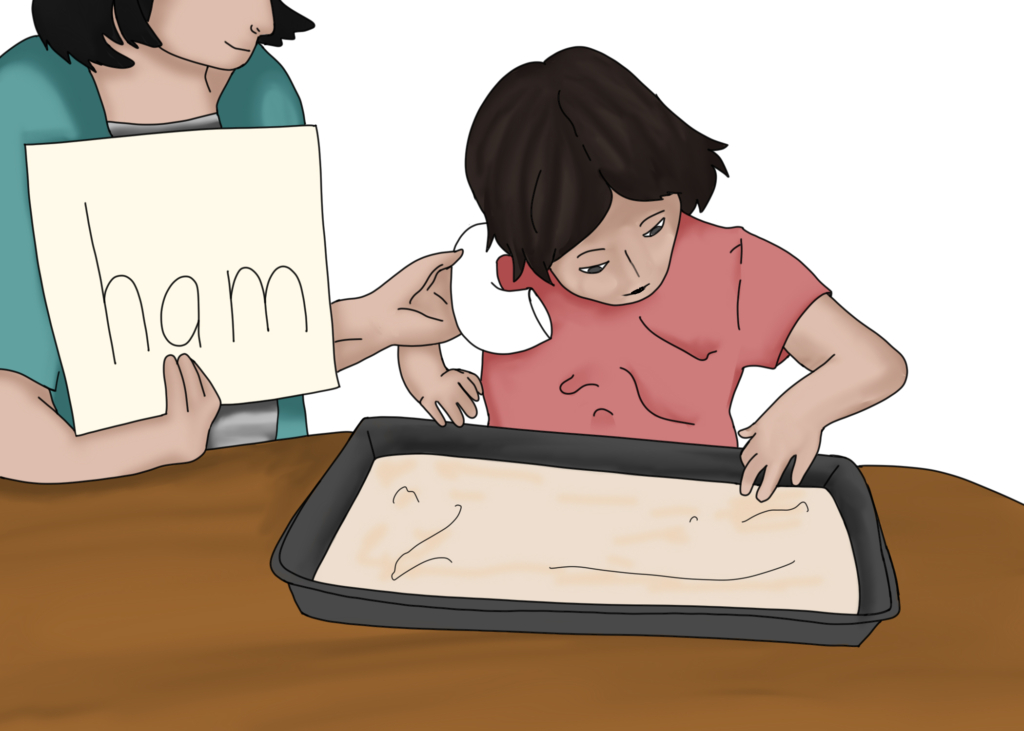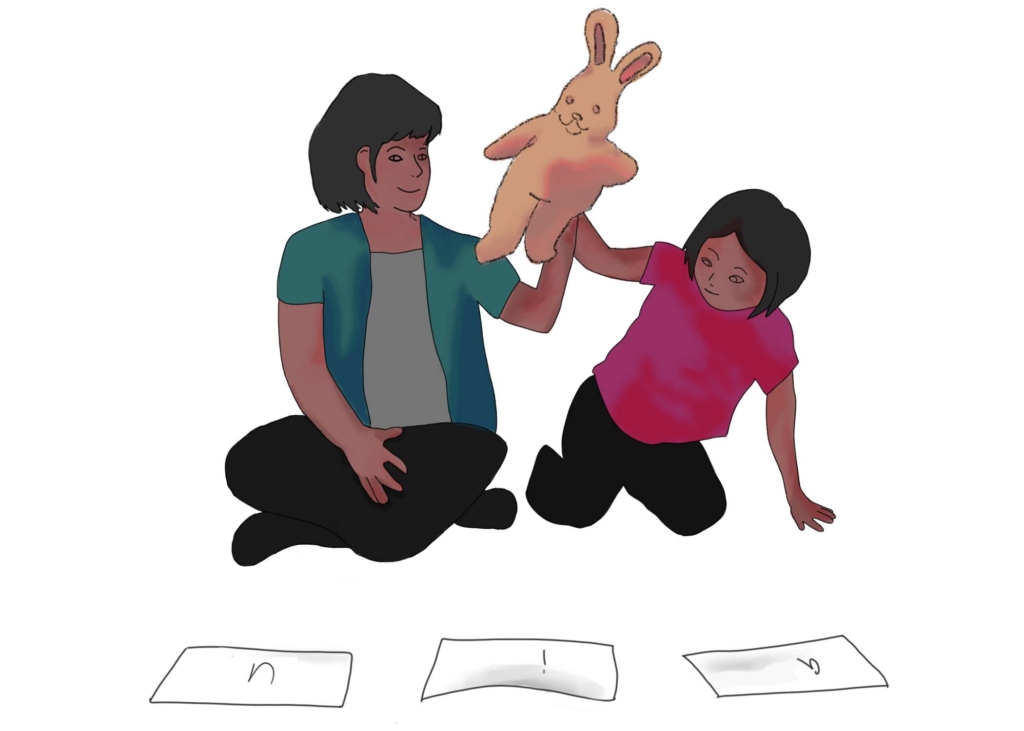
Sometimes the hardest part of teaching a child to read is determining if they’re even ready. We don’t want them left behind, but we don’t want to create frustration by pushing reading too soon. What to do?
The most crucial skill for reading readiness is “phonemic awareness,” the ability to hear the separate sounds that make up a word. Reading instruction connects the sounds of spoken language to symbols, and that can be difficult or impossible if your child doesn’t recognize those sounds to begin with. A child with poor phonemic awareness will mix up letter sounds while trying to read, and this will be frustrating for everyone involved.
Here’s an easy diagnostic to evaluate your child’s phonemic awareness:
Can your child:
- Hear rhyming words? When listening to a group of words, can your child pick out the words that rhyme?
- Make up rhyming words? (e.g., “Tell me a word that rhymes with hat.”)
- Separate a word into sounds? (e.g., “The three sounds in cat are /c/ /a/ /t/. What are the three sounds in Sam?)”
- Listen to a group of words and recognize words that begin or end with a certain sound? (e.g., “Tell me two words that begin with /s/”)
- Blend two sounds together.
If these tasks are difficult, work on developing phonemic awareness.
5 Ways to Focus on Phonemic Awareness:
1. Emphasize the sounds of the letters rather than the names of the letters. This approach is used by Montessori schools, and it produces superior results with young children who are beginning to read. For example, if you are doing a writing exercise, just say the sound and ask your child to write the letter. Avoid naming the letter until after they attempt the task. Then say the name of the letter and immediately pair it with the sound. To make the writing exercise fun, fill a shallow tray with shaving cream or a combination of glitter and sand.
Reading By Design>Methods>Multisensory Activities
2. Combine phonics practice with active games such as the Stuffed Animal Game and Toy Car Game.

Incorporate one of your child’s toys into a game. ReadingbyDesign.net>Methods>WordGames2
Materials: letter cards, stuffed animal
Directions: Spread several letter cards apart on the floor, facing the same way. Start with just a couple cards and gradually add more.
Instructions: When I point to a card, say the sound with me. Then throw your toy to the letter. The sound is
Optional: Use a phonics phone (explained below) while practicing the sound. Review cards at the end of game.
Game with Toy Cars:
Follow directions for the Stuffed Animal Game above. Instead of throwing a toy, your child pushes a car from letter to letter. This is popular with both boys and girls. For more game ideas:
ReadingbyDesign.net>Methods>WordGames
ReadingbyDesign.net>Methods>WordGames2
The games at the above links are intended for children who are already reading short words, but they can be adapted for an emergent reader. Just substitute sounds/letters for words.
3. Use a phonics phone during practice. The phone is a device that amplifies the child’s speech and feeds it directly into their ear. This leads to a dramatic increase in auditory stimulation and accurate processing of sounds. Attention focused on sound/letter correlation will promote steady growth in reading skills.
The phone can be purchased online from different companies or assembled from materials readily available at your local hardware store. Making your own phonics phone is easy.
ReadingbyDesign.net>Methods>MultisensoryActivities
4. Incorporate apps designed to teach phonemic awareness into your lessons.
Phonics Island, Letter Sounds: App by 22learn: App for preschoolers based on Montessori approach to teaching phonics. Excellent!
Montessori Letter Soundsby Edoki: One of the best apps for young children.
Reading Raven 1 by Early Ascent, LLC: For beginning readers, this app reviews letter sounds and teaches sound blending.
Starfall: This free website is a great resource for all young children learning their sounds and beginning to readers.
Reading Eggs: An excellent online program for young children learning to read. Your child moves seamlessly from learning letters/sounds into words and stories. There is a large library of books and audio materials.
5. Use Explode the Code workbooks to give extra structure to your daily phonics practice.
Explode the Code Workbooks:
Get Ready for the Code, Book A Consonants b, f, k, m, r, t
Get Set for the Code, Book B Consonants d, h, j, n, p, s
Go for the Code, Book C: Consonants c, g, l, q, v, w, x, y and z
Explode the Code Books 1: Consonant & Short Vowels Review
A child who is ready to read
When a child knows some sounds very well and can blend the sounds they know, it is time to start creating words. For example, if a child knows the letters t, a, c, s, m, p, they could blend them to form at, am, as, cap, Sam, cat, map, sat, pat. Start by blending two sounds at a time. The third sound can be added in later lessons.
A child who is not ready to read
Some children have a generalized problem hearing sounds. They are not able to consistently identify sounds in words or produce the correct sounds when shown individual letters. This skill should develop before formal reading instruction begins. Play rhyming games, read aloud, do art and music activities with words that have similar patterns. Play computer games (in moderation) designed for preschoolers and Kindergartners. Hold off on reading words until progress is made with recognizing sounds. Your child’s preschool or kindergarten teacher should be able to advise you on your child’s progress in this area.
Cathy Pelzmann, M.S., is a certified reading specialist with a Master’s degree in special education and 20 years experience helping learners excel. For more information on setting up a home reading program, her book, Teach Your Child to Read: What to Do When Your Child Is Struggling, will be available for purchase on Amazon in January. She offers sessions over Zoom and can be contacted at pelzmann@advantagetutoring.net.

Leave A Comment